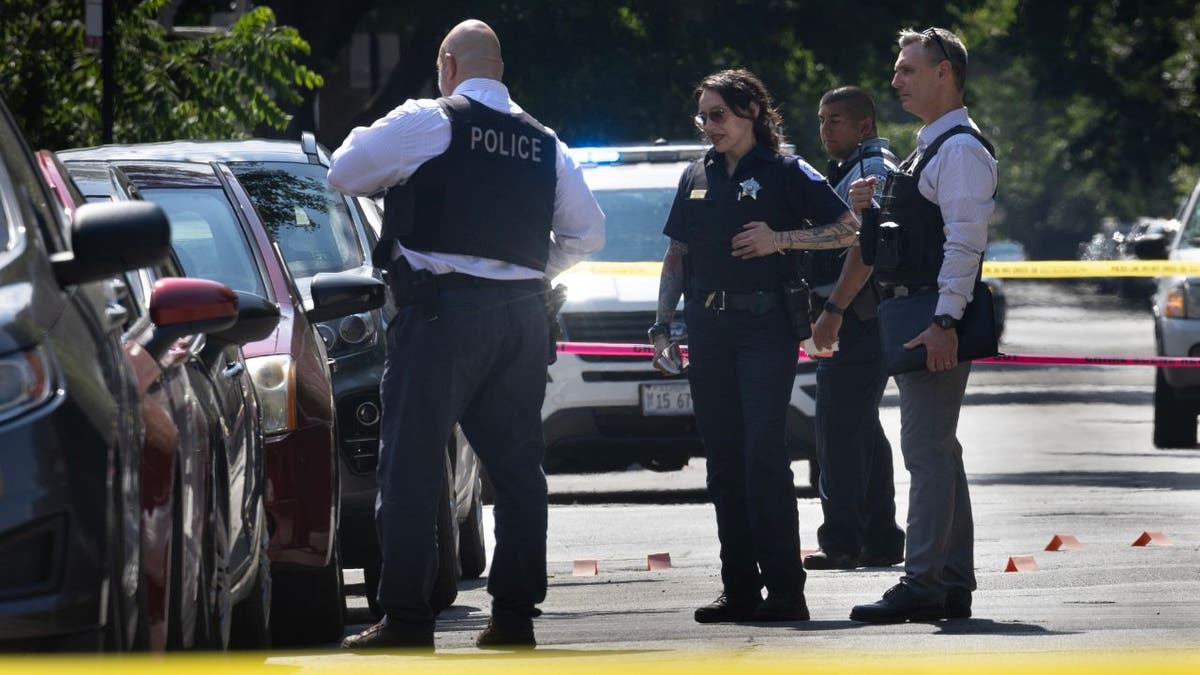We support our Publishers and Content Creators. You can view this story on their website by CLICKING HERE.
A recent report by the FBI showed that violent crime dropped by around 3% in 2023 compared to the year before, with murders and non-negligent manslaughter falling nearly 12%.
But a crime data expert tells Fox News Digital that these figures are not a true reflection of overall crime, but that’s because the FBI is working to create a more transparent and detailed reporting system.
The issue of violent data has become a focal point in the 2024 presidential race, with former President Trump claiming during his debate with Vice President Harris that crime is “through the roof” under the Biden-Harris administration. Trump’s comments were “fact-checked” live by ABC News moderator David Muir who said the opposite was the case, citing FBI figures. Trump quipped back, labeling the FBI statistics as “defrauding statements.”
The 2023 FBI report also showed rapes decreased more than 9% while aggravated assault decreased nearly 3%. Overall property crime decreased more than 2%, but motor vehicle theft shot up nearly 13%.
WHO SUFFERS FROM DEFUNDING THE POLICE? THIS BLUE CITY HAS OVER 1,000 UNSOLVED MURDERS

The issue of the FBI’s violent data has become a focal point in the 2024 presidential race when former President Trump claimed during his debate with Vice President Harris that the figures were inaccurate. (Screenshot: Fox News simulcast of ABC News Presidential Debate)
Sean Kennedy, who specializes in law enforcement and crime data analysis, says that FBI figures are “riddled with errors” because it is trying to transition the nation’s more than 19,000 plus law enforcement agencies to use the FBI’s National Incident-Based Reporting System (NIBRS).
NIBRS, which requires multiple data points for every offense, is a more detailed system of data measurement compared to systems police forces have traditionally used and therefore a more onerous one, Kennedy says.
In 2021, the FBI mandated that all law enforcement agencies submit crime data via NIBRS but about 40% of agencies failed to do so for various reasons, mostly due to the burden it places on resources, Kennedy says.
To increase participation, the FBI then relaxed the NIBRS requirement in 2022, allowing agencies to report via either the legacy system or NIBRS.
The FBI says 73% of the agencies used NIBRS last year while 12% were using the older methods. The remainder did not submit any data.
Kennedy says the FBI then uses estimates to make up that shortfall, and if NIBRS data is also submitted incompletely, the FBI uses other estimation methods to fill in the gaps.
“All estimates are off inherently, they’re estimates and the FBI is now using estimates to get to a more accurate figure than the raw reporting totals,” Kennedy said. “But that doesn’t mean that they’re more wrong or less wrong. It just means that they’re still wrong.”
It’s also difficult to compare previous years given the different ways the data is being submitted, he says.
VIOLENT CRIMES HAVE INCREASED UNDER BIDEN-HARRIS ADMIN DESPITE DEMS’ DENIALS: EXPERT

Police investigate the scene of a drive-by shooting on July 06, 2024 in Chicago, Illinois. At least 103 people were shot, 19 fatally, in gun violence in the city over the long Fourth of July holiday weekend. (Scott Olson/Getty Images)
Going through the data, Kennedy says he found dozens of cities where the homicide numbers are off by 20% from what the city itself reported.
For example, the FBI report shows there were 499 homicides in Chicago in 2023, but the Chicago Police Department’s own figures reported 617 homicides.
“That is 118 missing murders,” Kennedy says. “There’s mistakes, there’s missing data and all of that has to be assumed when you look at FBI numbers.”
“It’s likely that the FBI received data for only part of the year, so the offense counts that they reported reflect either mislabeling by the FBI, where they made a mistake on the input side, or they had to extend out the analysis… where they’re guessing effectively what it would have been like in the rest of the year.”
“So Chicago seems to have not given the FBI all the data because they couldn’t comply with the NIBRS burden and that’s a problem because the burden is so high that Chicago said ‘we’re not going to do it’ and then the FBI has to guess,” said Kennedy, who is the executive director of the Coalition for Law Order and Safety (CLOS), a nonprofit research group which studies and advocating for effective public safety policies.
“NIBRS numbers aren’t better or worse per se. They are still flawed and those flaws are concerning.”
The Chicago Police Department referred Fox News Digital to a January news release when asked for comment regarding the figures. The release summarized the department’s crime stats for 2023, which showed a 12.9% drop in homicides compared to 2022.
The FBI says its only goal is to provide the public with the most accurate numbers possible, noting NIBRS was not an FBI creation but a system that was led by local and state law enforcement agencies that wanted to capture more rich data.
The agency says that the crime data it received from law enforcement agencies last year covered 94.3% of the population.

The FBI says it is transitioning to a more transparent system of reporting crime data. (iStock)
“We do have a very robust system here to capture the vast majority of collection of data, but regardless of that there’s no 100% granularity,” one of the officials said.
Additionally, the officials said that every agency with at least one million people in its jurisdiction provided a full year of data to the FBI, according to the report.
“So what that means is that anyone claiming that because of the NIBRS transition and agencies who were unable to transition, that we are somehow lacking information in our crime trends is completely false because we have data that is not only in NIBRS, but also has been provided through that summary system that’s been around for decades.”
“We’re not at 100%, but we are consistently talking to law enforcement agencies and working with law enforcement agencies to transition to NIBRS.”
To ascertain the crime rate among the entire U.S. population, given the 5.7% population coverage shortfall, the officials say the bureau uses an extrapolation process based on the submitted data.
“There is a statistical process applied to that 85% of agencies … to that reported data in order to make it a true national representation,” the official said. The bureau says it’s also working to be in a situation where it can release the data to the public sooner, and every month.

Suspected smash-and-grab robbers raid a store. (Manhattan Beach Police Department)
“We want to make sure that we’re providing this information as quickly and accurately as possible for whoever might need it, for whatever purpose,” an official said. “We have no agenda except for just to make sure that we’re sending the message to the nation about what that crime looks like across the country.”
Kennedy says that local police departments need to be incentivized as well as face consequences for noncompliance.
“There are federal and local and state grants that are going to these departments, so we need to give them the resources to comply.”
CLICK HERE TO GET THE FOX NEWS APP
Kennedy says NIBRS was a great example of where a good idea was imposed from the top and made mandatory without proper consultation and working closely with local authorities to find out if compliance was possible.
“And we found out the hard way it wasn’t and that means that the 2021 data is almost useless. It’s all a guess and just riddled with errors. And so, we really don’t know how bad it was in 2021 because of that mandatory compliance.”
“But to be fair to everybody in the process they’re trying their best. And what’s most valuable here is the fact that I can find out that the Chicago number doesn’t match … is a testament to increasing transparency in crime data. This conversation could not have been had at a national level 20 years ago, let alone 50 years ago, we would only be guessing. Right now, we’re arguing over methodology and data inputs.”

 Conservative
Conservative  Search
Search Trending
Trending Current News
Current News 





